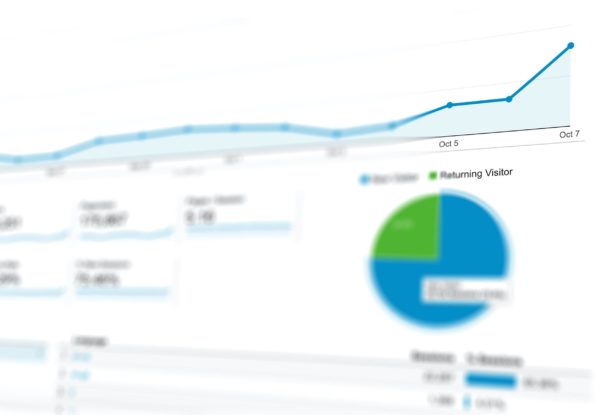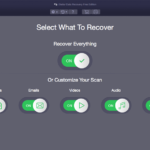How to Build an Affiliate Site That 37 Buyers Will Buy for $1.8 Million
So you’re getting started with affiliate marketing. Now where do you go?
We’ve sold hundreds of affiliate sites on our marketplace, for prices ranging from $2,000 in the early days right up to $1,818,182.80—a business deal we’ll look into in a moment.
With all of these successful businesses, we’ve noticed some trends in how the owners scale up to increase their profits and then sell their businesses for a big payday.

Once you’ve found the right product to promote through the best affiliate network, and you have a significant amount of converting traffic coming to your site, then you can start to focus on growth.
Let’s look at a $1,818,182.80 affiliate business we sold on our marketplace and see what we can learn about how they grew the business to this size.
The $1.8 Million Affiliate Site

Just two years old, this business sold for 56 times its monthly net profits.
This number is called a multiple. When valuing a business, we set this multiple to determine its expected sale price.
The multiple chosen for a business is based on a number of factors, including the business’ age, model, performance history, and assets.
At the time this business sold, the average multiple for affiliate business listed on our marketplace was 30.5x. Now, the base multiple for affiliate businesses is at 34x.
So how did this business sell for a multiple over 25x greater than the industry average?
Diversity of Affiliate Networks
When you’re associated with just one affiliate network, you leave your business open to significant risk.
All it takes is for an affiliate network to update their commission structure or terms of service, and your business loses earnings overnight. They could even shut down completely or ban you for misuse, accidental or otherwise, and you would lose 100% of your profits.
The seller of this business was connected to five affiliate networks, mitigating this risk.
Having multiple affiliate networks also opens up opportunities for higher commission rates, better affiliations with sites that convert at a higher rate, subscription-based products to bring you recurring revenue, and more products or services to promote.
The more you can broaden your scope within your chosen niche, the more reliable your earnings become.
It’s not just about the affiliate network, however.
Testing Affiliate Offers
As you know, the world is ever-changing. That means the products or services you promote will change, along with their levels of demand.
If you’re promoting a fad product, then the candle will burn out eventually and you’ll no longer have a business.
Even if you’re promoting an evergreen product, new laws can be introduced that make it less desirable or even obsolete.
Another thing you have to deal with is competitors entering your space. They might find affiliate offers that allow them to undercut you by promoting the same product at a cheaper price. Alternatively, they might promote and design their website better than you do and attract your audience.
This is likely why the owner of this business was regularly looking for new affiliate offers to test.
Having a variety of offers for different sub-niche products gives you stronger earnings, as it becomes more affordable to potentially lose earnings from one of your offers if product demand wanes or if the offer is no longer active.
Outreach for High-Quality Traffic
Building and growing an affiliate site is not just about getting traffic to your site; it’s also about the quality of your traffic.
You could be getting 10,000 visitors to your site every month, but if they aren’t interested in purchasing the products or services you promote, then they’re pretty much worthless.
Outside of SEO, a great way to get high-quality traffic is to do outreach on online communities and discussion groups.
That’s exactly what the seller of this business did. They spent time each week answering questions related to their niche on Quora and Reddit and then linked back to their website to drive some extra quality traffic.
This kind of traffic can be more valuable than SEO traffic because the user has had a direct experience with a person, as opposed to an algorithm such as Google’s search engine. Moreover, they have been given value since you’ve answered a question for them and helped them solve a problem.
Building a presence on these types of platforms can be very powerful. What’s more, it diversifies your traffic streams.
If you’re only generating traffic from Google, then you leave yourself wide open to updates that can sink your traffic levels overnight. This is why it’s best to have multiple traffic sources to mitigate that risk and bring in more traffic.
Social media is another quality traffic source, and the seller of this business utilized this medium by sharing their articles on Twitter; this method is simple but can be highly effective.
Building an Email List

Gaining readers of your content is one thing, but you need to make the most of these readers.
People who regularly engage with your content and purchase the products or services you promote are highly likely to become loyal followers of your brand. Using this to your advantage is a great way to grow your brand and, ultimately, your revenue.
Having a large following makes your business more established, as you have a greater chance of making more revenue than a content site that is always hunting for new customers.
Building an email list is a great way to nurture your contacts and keep them in touch with your brand. It gives you an audience that listens to what you have to say. This makes it easier to garner more sales.
Many successful affiliate sites offer a lead magnet. This is a freebie that the affiliate gives away to their audience in exchange for their email address and potentially other contact details. When the affiliate has their audience member’s email address, they’re able to send them regular emails to keep contact or promote products or services on the site.
The final point to consider is that an active email list is an asset you can sell with your business. Remember how we said assets are a factor considered in determining your business valuation multiple?
Next, let’s look at some of the other baseline factors that are considered when valuing your content business.
How Affiliate Businesses Are Valued
Affiliate businesses tend to get a lot of interest from buyers because of the nature of the business model; it’s easy to run once it’s off the ground and making profits, and it’s easy to scale. You can add display advertisements to your site by simply adding a piece of code and letting the ads make money for you.
There are some fundamental valuation factors we consider when valuing an affiliate site that collectively encompass the entire value of the business. We’ve talked about the business model; now, let’s dive into some of the other factors.
Business Age
A young affiliate site that has skyrocketed in growth isn’t desirable to all buyers. Some might think the growth won’t last because the site’s niche isn’t evergreen.
It’s a risk for buyers to take on a business that has only been running for a year or two because the business often hasn’t faced enough challenges yet—such as Google updates, rise in competition, or dips in product demand.
This is why a more established business usually sells for more.
Time Required to Maintain the Business
For most established affiliate businesses, maintenance time is the advantage they have over other types of businesses, such as eCommerce or Amazon FBA, that take more time to run.
The less time it takes to run the business, the more buyer interest it will have and, thus, the higher the multiple the business will get.
Growth or Decline
We calculate a 12-month average of your monthly net profit when valuing your business. That way, we can take into account any seasonality your business has or any other dips or spikes in traffic and revenue.
Most buyers are looking for a business that is consistently profitable.
Diversification
We preach this philosophy a lot at Empire Flippers: the more diverse your business, the stronger it is, the longer it will last, and the more valuable it will be.
Have multiple traffic sources, affiliate networks, products or services to promote, and sources of income to gain a higher business valuation.
Defensibility
Defensibility is to do with the strength of your brand.
How much of a loyal following do you have? Do you have an email list or social media followers?
As mentioned earlier in this article, the greater your following, the more assets you have and the stronger your brand is in its niche.
Another aspect of defensibility is how unique your brand or the products or services you promote are. Can another affiliate easily copy what you have and do it better to effectively shoulder you out of the niche?
If you have a large following and you rank well in search engines for hot keywords, your business will be valuable.
Business Assets
The main assets an affiliate business can have are the website, email subscribers, social media followers and accounts, and employee contracts if you have a team working on your business.
If all of these assets contribute to the business in a substantial way, then they will be considered valuable and will bring up the value of your business.
Scale and Get a Higher Sale
If you take the lessons we’ve learned from the sale of the $1.8 million business we’ve talked about in this article, then you can increase not only the size of your business and its profits, but also the final sale value.
Luckily, the two go hand in hand. When you scale your business to make it bigger, that increases its value.
If you feel like you’ve done all you can with your affiliate business, or you have other projects you want to focus on, then sell your affiliate site on the world’s largest curated marketplace today.
















